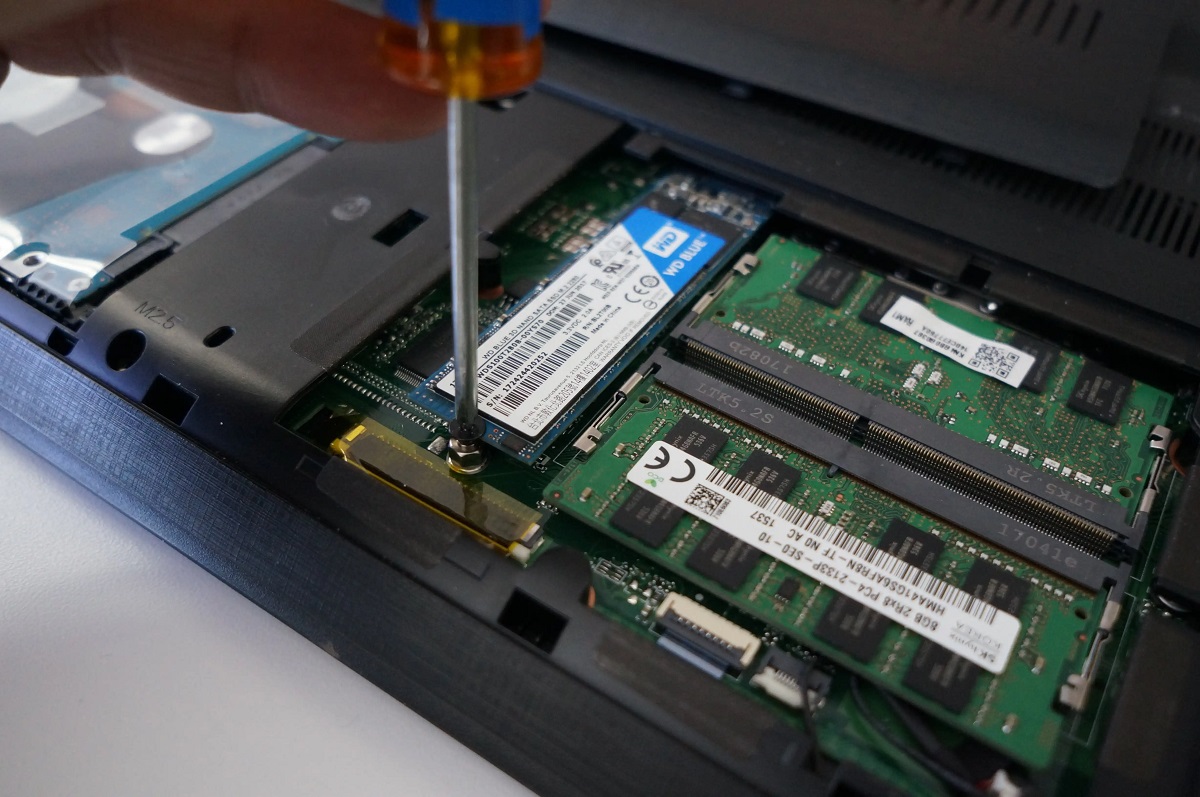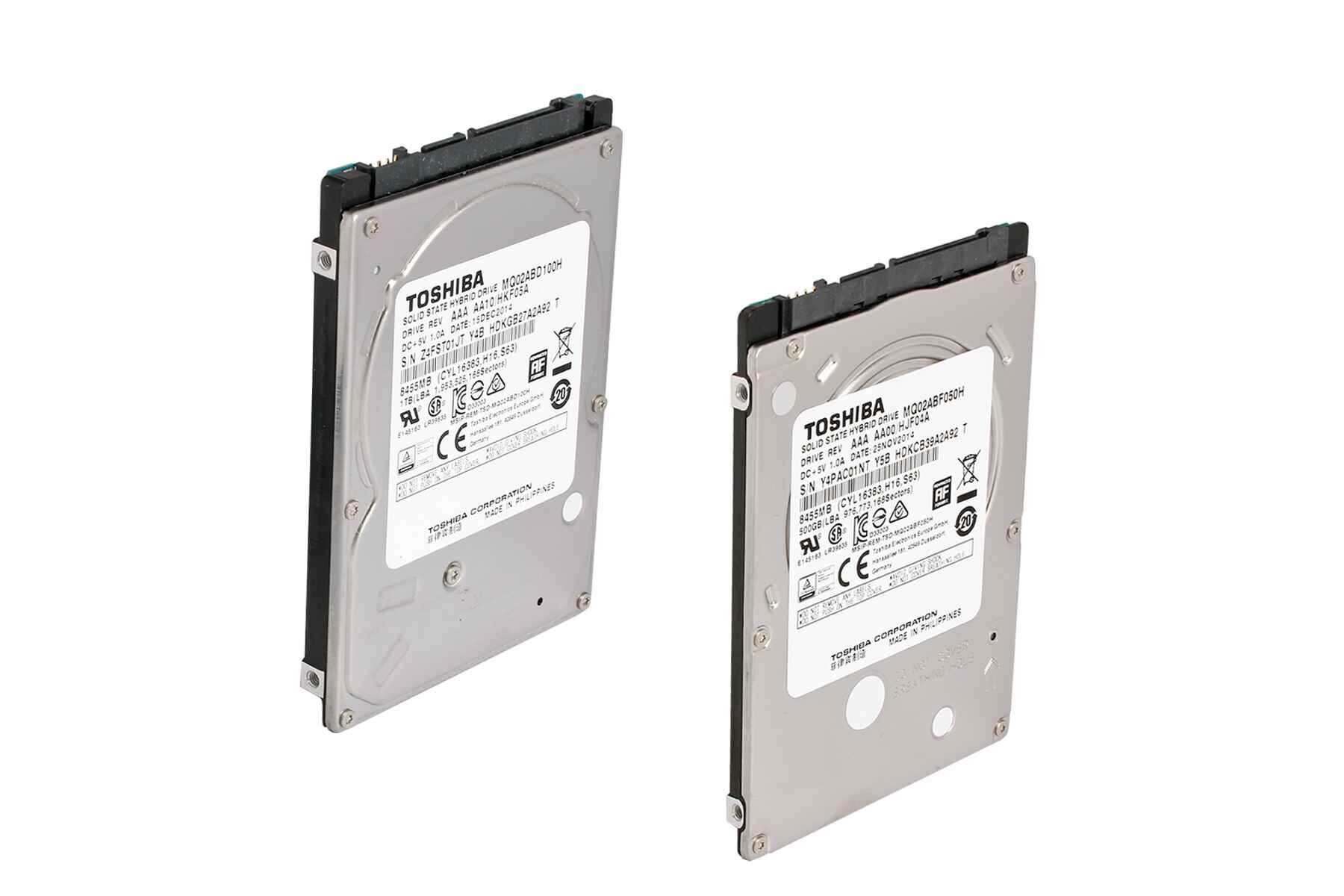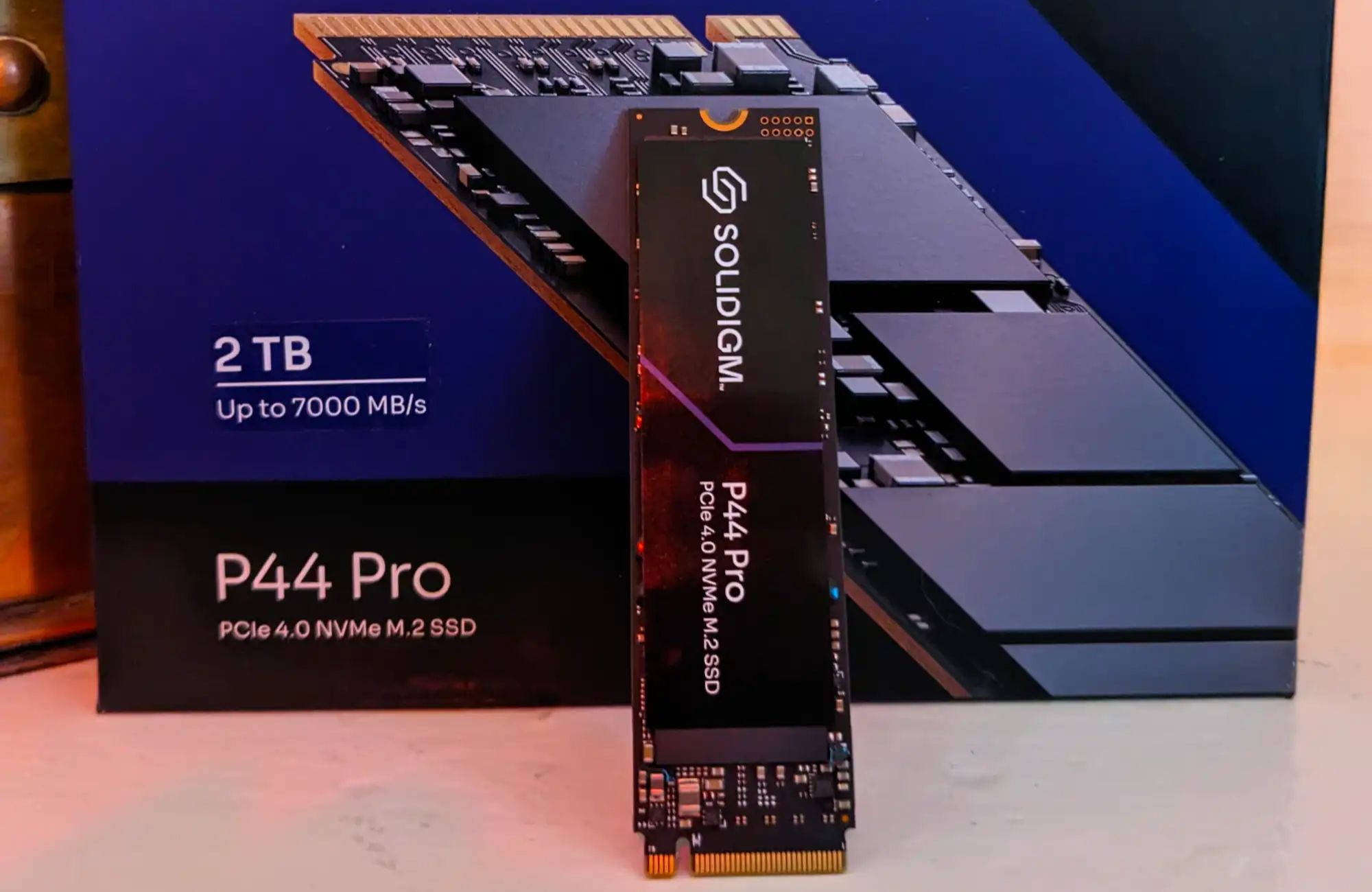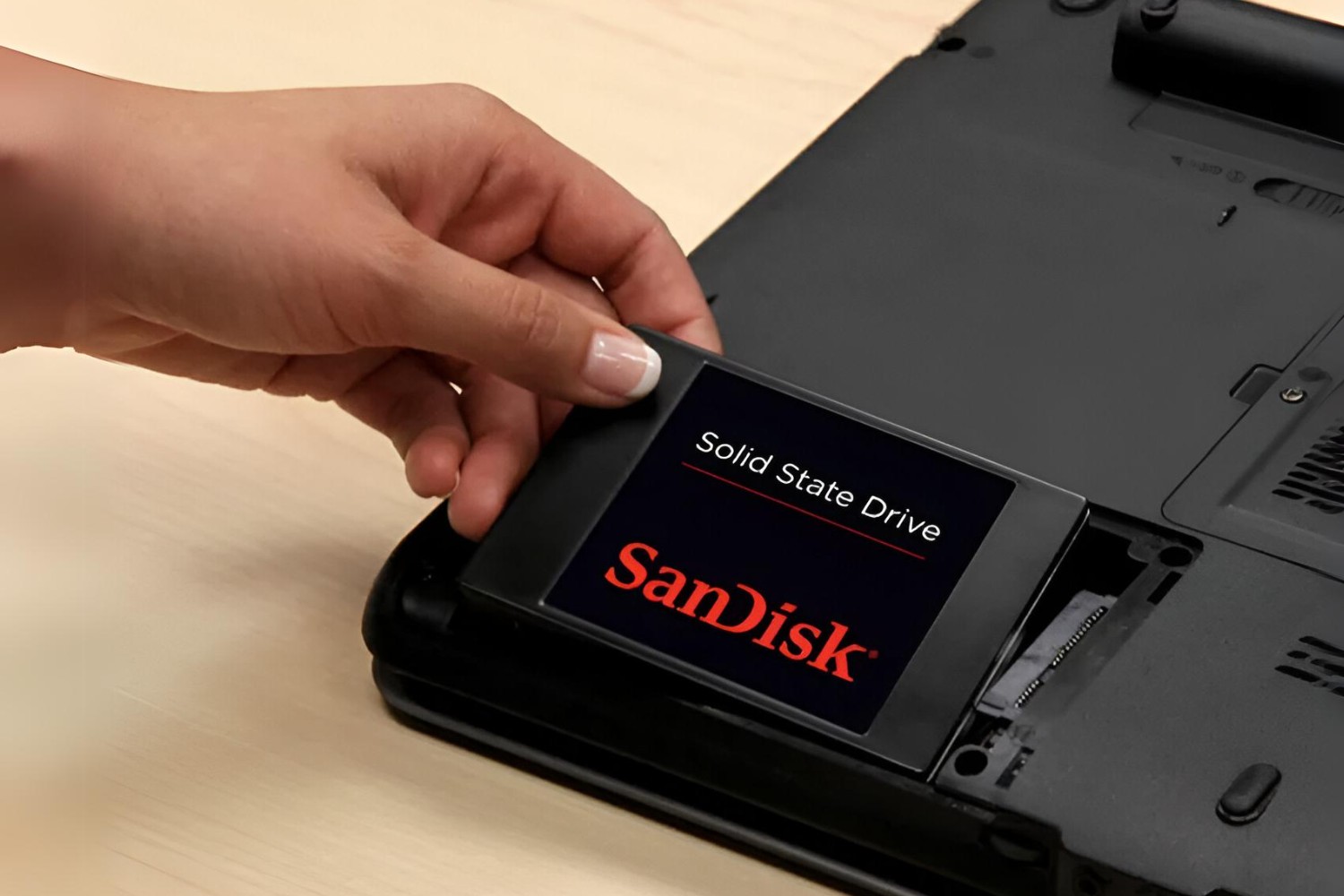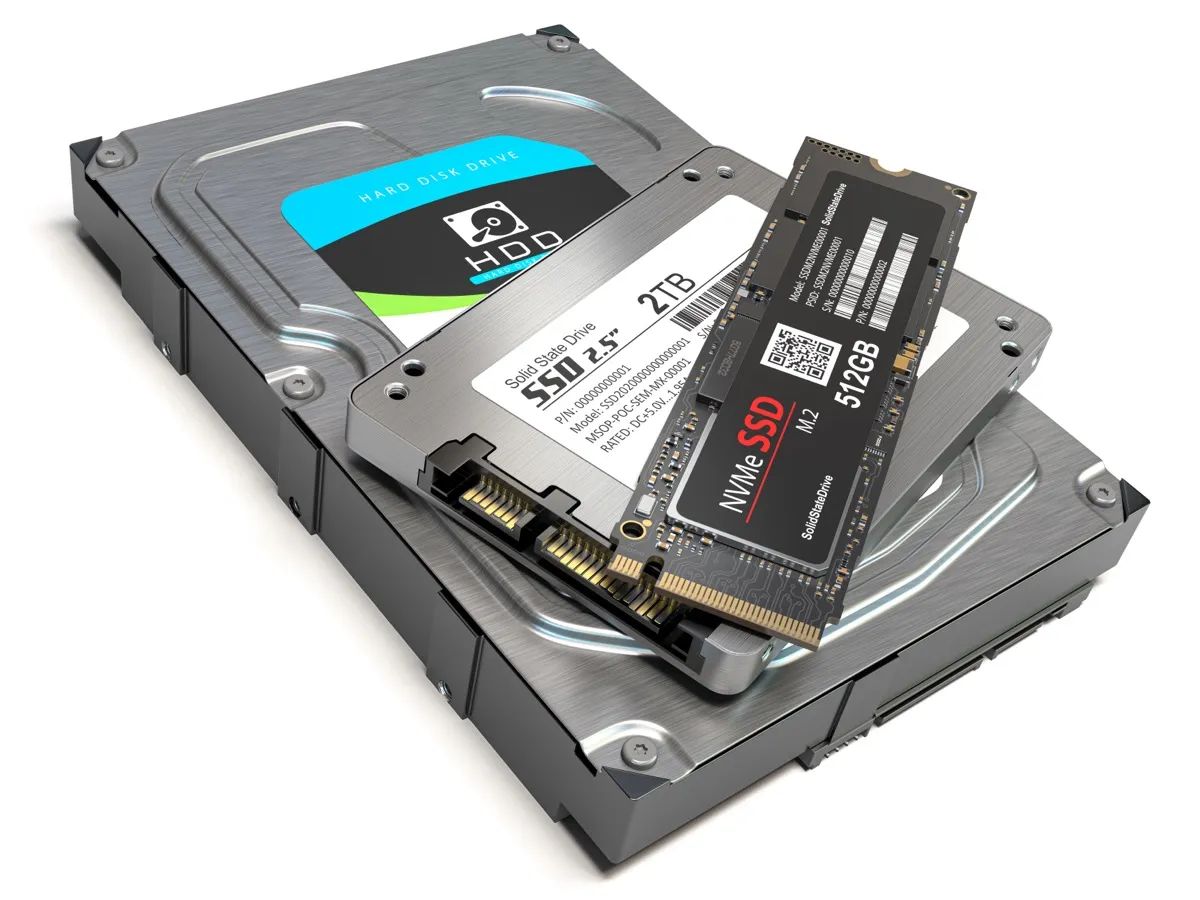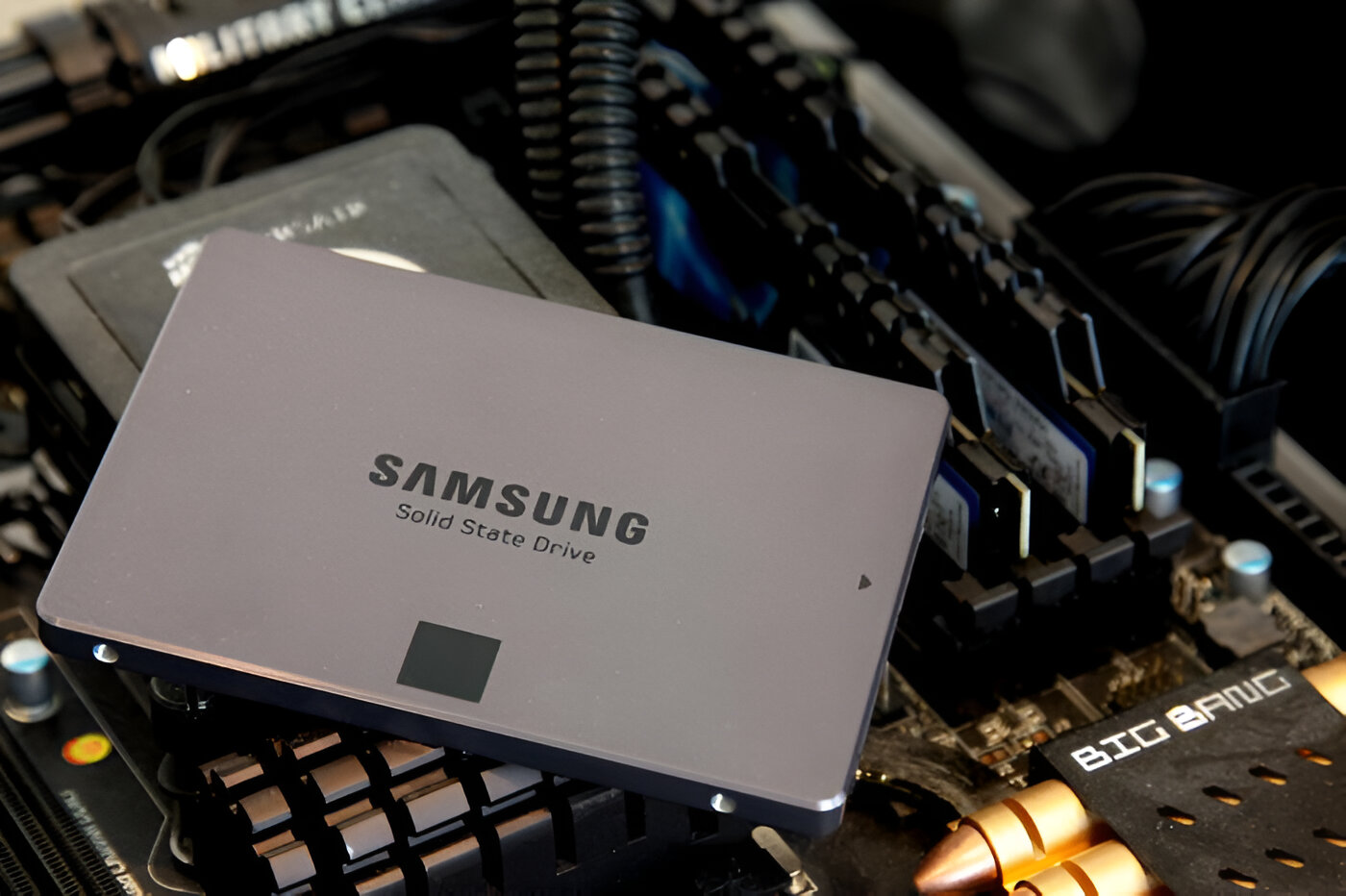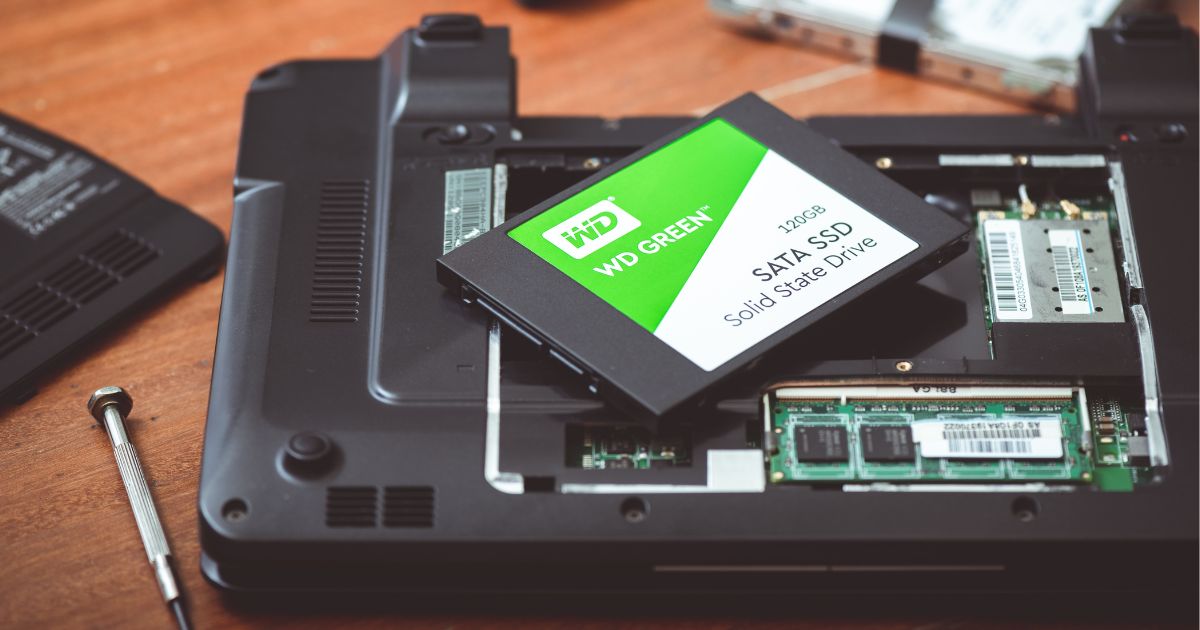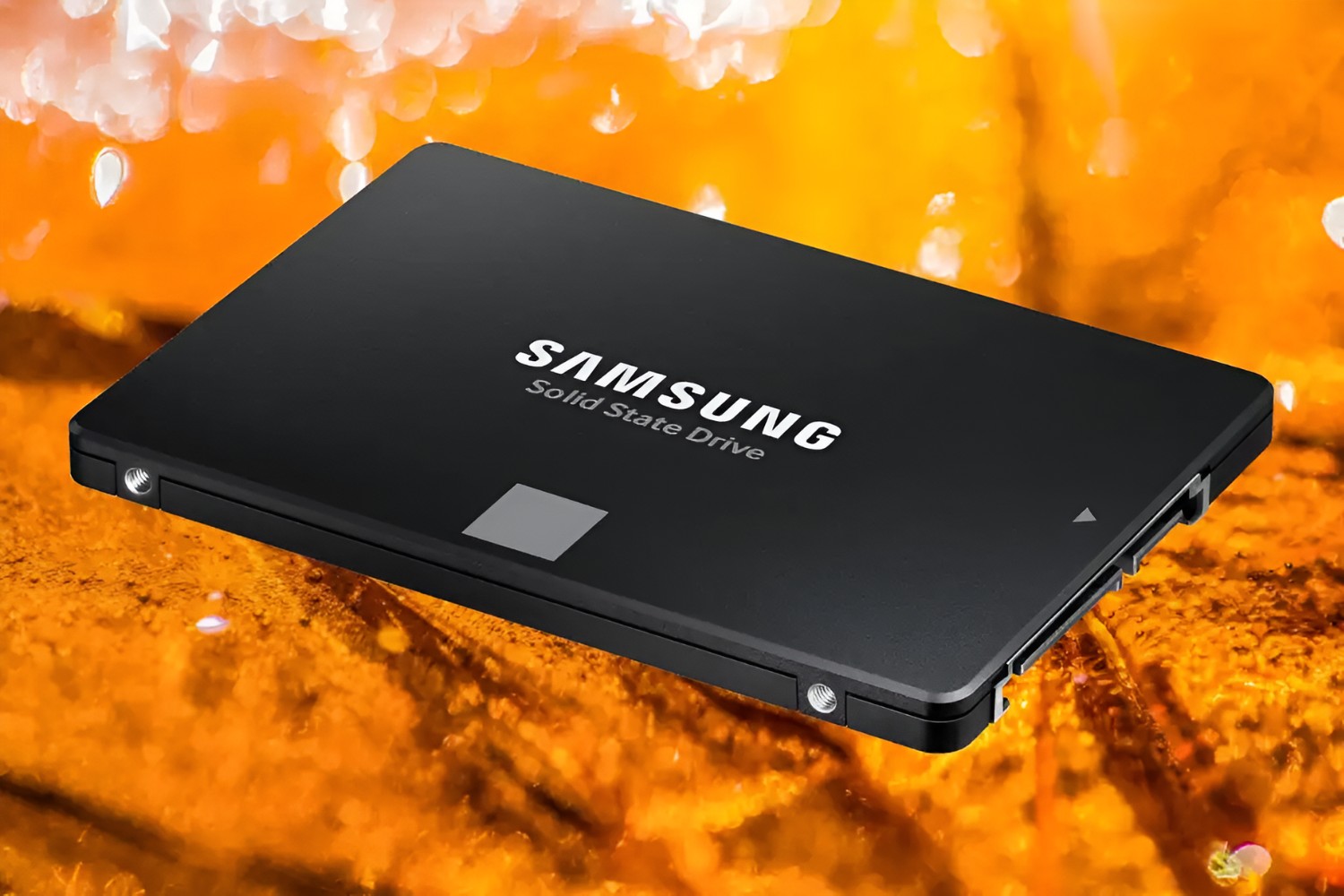Introduction
Welcome to the digital age, where technology is evolving at a rapid pace. One of the most significant advancements in recent years is the advent of solid state drives, or SSDs. If you’re looking to give your computer a serious performance boost, upgrading to an SSD is the way to go.
But what exactly is a solid state drive? In simple terms, it’s a storage device that uses integrated circuit assemblies to store data persistently, unlike traditional hard disk drives (HDDs) that rely on spinning disks and magnetic coatings. SSDs offer several advantages over their HDD counterparts, including improved speed, reliability, and durability.
In this article, we will explore why upgrading to a solid state drive can greatly enhance the performance of your computer. From faster boot times and improved file transfer rates to reduced latency and enhanced multitasking capabilities, there are numerous benefits to be gained. We will also discuss important factors to consider when making the switch, such as storage capacity, compatibility, and cost.
So get ready to unlock the full potential of your computer as we dive into the world of solid state drives and discover just how fast your system can become.
Note: It’s important to keep in mind that the information provided in this article is based on general knowledge and may vary depending on the specific computer system and components involved.
What is a Solid State Drive?
A solid state drive, commonly known as an SSD, is a storage device that has revolutionized the way data is stored and accessed in computers. Unlike traditional hard disk drives (HDDs) that use spinning magnetic disks, SSDs utilize flash memory to store data.
Flash memory is a type of non-volatile memory, meaning it retains data even when the power is turned off. This is in contrast to volatile memory like RAM, which loses its data when power is interrupted. The use of flash memory in SSDs provides several advantages over traditional HDDs.
Firstly, SSDs are much faster than HDDs. Since there are no moving parts involved, accessing data from an SSD is significantly quicker. This translates to faster boot times, shorter application loading times, and overall snappier system performance.
Secondly, SSDs are more reliable and durable. With no moving mechanical parts, an SSD is less prone to physical damage caused by vibrations or drops. This makes it an ideal choice for laptops and other portable devices. Additionally, SSDs have a lower failure rate than HDDs, resulting in increased data integrity and less chance of data loss.
Furthermore, SSDs consume less power than HDDs, resulting in increased battery life for laptops and lower energy costs for desktop computers. With their energy-efficient design, SSDs contribute to a greener and more sustainable computing environment.
SSDs come in various form factors, including the standard 2.5-inch size for laptops and desktops, as well as smaller configurations like the M.2 and mSATA. They can also vary in storage capacity, from a few hundred gigabytes to multiple terabytes, allowing users to choose the right size to meet their needs.
In recent years, SSD prices have significantly declined, making them more affordable for consumers. Though still generally more expensive than HDDs on a per-gigabyte basis, the performance benefits and long-term reliability of SSDs make them a worthwhile investment for those seeking improved computer performance.
Note: While SSDs offer many advantages, it’s important to consider your specific needs before making a decision. If you require large storage capacities at a lower cost, HDDs may still be a viable option.
Benefits of Upgrading to a Solid State Drive
Upgrading to a solid state drive (SSD) can bring a multitude of benefits that will greatly enhance your overall computing experience. Let’s take a closer look at some of the advantages you can expect:
Improved Boot Times and Overall Speed: One of the most noticeable benefits of upgrading to an SSD is the dramatic improvement in boot times. SSDs can start up your computer in a matter of seconds, compared to the slower loading times of traditional hard disk drives (HDDs). Additionally, launching applications and accessing files becomes much faster, resulting in a smoother and more efficient workflow.
Faster File Transfer Rates: SSDs offer significantly faster read and write speeds compared to HDDs. This means that transferring large files, such as videos, images, or even complex software installations, becomes a much quicker process. With an SSD, you can spend less time waiting and more time being productive.
Reduced Latency and Improved Responsiveness: SSDs have incredibly low access times, which means there is minimal delay between your computer sending a request for data and the SSD retrieving it. This reduced latency leads to a more responsive system, as tasks are executed almost instantaneously. Whether you’re launching applications, opening files, or browsing the web, the speed and responsiveness of an SSD will make every task feel seamless.
Enhanced Multi-tasking and Application Performance: SSDs excel in handling multiple tasks simultaneously. With their fast read and write speeds, switching between multiple applications becomes effortless. SSDs also improve the performance of resource-intensive applications, such as video editing software or graphic design programs, as they can quickly access the necessary files and data without any lag.
Better Gaming Experience: Gamers can also benefit greatly from upgrading to an SSD. With faster loading times, games launch quicker and levels load faster. This means you can jump right into your favorite games without wasting time on lengthy loading screens. In addition, SSDs can help reduce the stuttering and lag often experienced in gaming, providing a smoother and more immersive gameplay experience.
Note: The actual performance boost you will experience may vary depending on your system’s hardware configuration and the specific applications or games you use.
By upgrading to an SSD, you can unlock the full potential of your computer, enjoying faster boot times, improved file transfer rates, reduced latency, enhanced multitasking capabilities, and a superior gaming experience. These benefits make the investment in an SSD well worth it for any computer user seeking a significant performance upgrade.
Improved Boot Times and Overall Speed
One of the most notable benefits of upgrading to a solid state drive (SSD) is the significant improvement in boot times and overall speed of your computer. With an SSD, you can experience lightning-fast startup times and a much smoother computing experience.
When you turn on your computer, the operating system and various software applications need to be loaded into memory. With a traditional hard disk drive (HDD), this process can take a considerable amount of time due to the physical spinning of the disk and the time it takes for the mechanical read/write head to access the necessary data. In contrast, SSDs have no moving parts, allowing them to retrieve data almost instantaneously.
As a result, when you upgrade to an SSD, you’ll notice a significant reduction in boot times. Instead of waiting for several minutes for your computer to start up, it can be up and running in seconds. This not only saves you time but also improves your overall productivity, as you can get to work or access your files faster.
In addition to faster boot times, SSDs also offer speed improvements in day-to-day tasks. From opening applications to copying files, everything becomes noticeably snappier. SSDs excel in random read and write operations, which are common in everyday computing tasks. This means that launching applications happens almost instantaneously, and you don’t have to wait for files to load or transfer as long.
Furthermore, SSDs provide a more responsive computing experience. With an HDD, there can be a noticeable delay between clicking on an application and it actually opening. With an SSD, this delay is significantly reduced, making your computer feel more responsive and fluid.
Another area where SSDs shine is in system responsiveness. With an HDD, you may experience lag or slowdowns when multiple applications are running simultaneously. This is because the HDD has to jump between different parts of the disk, causing delays in data retrieval. With an SSD, data can be accessed almost instantly, allowing for smooth multitasking and minimizing any performance degradation when running resource-intensive applications.
Note: The actual improvement in boot times and overall speed will depend on various factors, including the specific SSD model, system configuration, and the software installed on your computer.
By upgrading to an SSD, you can enjoy blazing-fast boot times, quicker application launches, and a significantly more responsive computing experience. The improved speed and performance of an SSD can greatly enhance your productivity and make using your computer a more enjoyable and efficient experience.
Faster File Transfer Rates
One of the key advantages of upgrading to a solid state drive (SSD) is the significantly faster file transfer rates compared to traditional hard disk drives (HDDs). Whether you’re copying files, moving data, or transferring large multimedia files, an SSD can save you precious time and improve your productivity.
SSDs offer remarkable read and write speeds, allowing data to be transferred at a much faster rate. While HDDs rely on a mechanical read/write head that moves physically across a spinning disk to access data, SSDs use flash memory that can be accessed electronically, resulting in near-instantaneous data retrieval.
When it comes to transferring files, SSDs can have a substantial impact on the time it takes to complete the task. Whether you’re moving files from one location to another within your computer, copying files to an external storage device, or downloading files from the internet, SSDs can significantly reduce the transfer times.
For example, if you have a large-sized video file that you need to transfer from one folder to another, an HDD might take several minutes to complete the task, especially if it is a high-definition file. In contrast, an SSD can complete the transfer in a fraction of the time, potentially reducing it to a matter of seconds.
Not only does this save you time when transferring files, but it also enables you to be more efficient in your daily tasks. If you frequently work with large files, such as video editing projects, graphic design assets, or database files, the time saved with faster file transfers can add up significantly over time.
In addition to faster transfer times, SSDs also provide consistent performance throughout the entire transfer process. Unlike HDDs that can experience slowdowns as the read/write head moves across different parts of the disk, SSDs maintain a consistent speed regardless of the location of the data. This means that even when dealing with fragmented files or large batches of smaller files, the transfer rates remain consistent and swift.
Note: The actual file transfer speeds you experience will depend on various factors, including the specific SSD model, the interface used (such as SATA or NVMe), and the system configuration.
By upgrading to an SSD, you can enjoy significantly faster file transfer rates. Whether you’re copying, moving, or downloading files, the speed and efficiency of an SSD can save you valuable time and streamline your workflow. With faster file transfers, you can focus on your tasks rather than waiting for data to transfer, enhancing your overall productivity.
Reduced Latency and Improved Responsiveness
One of the key advantages of upgrading to a solid state drive (SSD) is the reduced latency and improved responsiveness it offers. Compared to traditional hard disk drives (HDDs), SSDs excel in delivering near-instantaneous data access, resulting in a more seamless and responsive computing experience.
Latency refers to the time it takes for a storage device to respond to a data request. While HDDs rely on spinning disks and a mechanical read/write head to access data, SSDs utilize flash memory that can be accessed electronically. This technology allows SSDs to provide significantly lower latency, meaning the time between issuing a command and retrieving the data is greatly reduced.
As a result, SSDs offer improved responsiveness in various aspects of your computing experience. Whether you’re launching applications, opening files, or browsing the web, everything feels snappier and more immediate.
With an SSD, applications launch almost instantly. Instead of waiting for a program to load, you can click on the icon and start using it within seconds. This is particularly noticeable with resource-intensive software such as video editing tools, graphic design applications, or complex data analysis programs. SSDs allow for swift access to the necessary files and assets, enabling you to work more efficiently.
Furthermore, file opening times are significantly reduced with an SSD. Whether it’s a document, a photo, or a video, you will experience shorter wait times when accessing your files. This is particularly beneficial when working with large files or accessing files from different locations on your computer.
SSDs also enhance web browsing performance. With their low latency and fast data retrieval, SSDs allow web pages to load quickly, resulting in a smoother browsing experience. You won’t have to wait for images or content to appear, and navigating between pages becomes almost instantaneous.
Additionally, SSDs improve system responsiveness when multitasking. With an HDD-based system, accessing data from different files simultaneously can cause delays due to the physical limitations of the read/write head. In contrast, SSDs excel in handling multiple tasks simultaneously, allowing you to switch between applications, open files, and perform various activities without experiencing performance bottlenecks or delays.
Note: While an SSD greatly reduces latency and enhances responsiveness, the overall performance improvement will also depend on other factors such as the processor, RAM, and software optimization.
By upgrading to an SSD, you can enjoy reduced latency and improved responsiveness in your computing activities. Whether you’re launching applications, opening files, browsing the web, or multitasking, the snappy performance of an SSD will transform your computing experience, allowing you to work more efficiently and enjoy a more responsive system.
Enhanced Multi-tasking and Application Performance
Upgrading to a solid state drive (SSD) can have a significant impact on the overall performance of your computer, particularly when it comes to multi-tasking and running resource-intensive applications. The fast read and write speeds of SSDs allow for seamless multitasking and improved application performance, enabling you to work more efficiently and effortlessly.
With an SSD, you can effortlessly switch between multiple applications without experiencing performance slowdowns. Traditional hard disk drives (HDDs) can struggle to keep up with the demands of running multiple applications simultaneously, resulting in increased load times, lag, and decreased responsiveness. SSDs, on the other hand, excel in handling concurrent operations, ensuring smooth transitions between applications and reducing any delays in data retrieval.
Whether you’re working on a complex project that involves using multiple software applications at once or simply juggling between different tasks, an SSD will provide a noticeable improvement in your multi-tasking capabilities. You’ll experience faster application launches, shorter data retrieval times, and more responsive interactions between different programs.
Furthermore, SSDs greatly enhance the performance of resource-intensive applications. Whether you’re working with video editing software, graphic design tools, or running simulation programs, SSDs provide quick access to the large files and data sets required by these applications. This results in smoother performance, reduced lag, and an overall improvement in productivity.
For example, when working with video editing software, an SSD can significantly reduce the time it takes to import, export, and render video files. Transferring large video files from storage to the editing software becomes faster, allowing you to spend less time waiting and more time editing. Similarly, when working with graphic design tools, such as Adobe Photoshop or Illustrator, an SSD ensures snappy loading times for large image files and smoother rendering of complex designs.
In addition to application performance, SSDs also contribute to faster data processing and compilation times. This is particularly beneficial for developers who work with code editors and IDEs. Compiling and running large projects become much quicker, saving valuable time and increasing overall productivity.
Note: While SSDs significantly enhance multi-tasking and application performance, the performance gains may vary based on the specific applications used and the overall hardware configuration of your computer.
By upgrading to an SSD, you’ll experience enhanced multi-tasking capabilities that allow you to seamlessly switch between applications and handle various tasks simultaneously. Additionally, resource-intensive applications will benefit from faster loading times, reduced lag, and improved responsiveness. With an SSD, you can boost your productivity and enjoy a smoother and more efficient workflow.
Better Gaming Experience
If you are a gaming enthusiast, upgrading to a solid state drive (SSD) can greatly enhance your gaming experience. With faster loading times, reduced stuttering, and improved overall performance, an SSD can take your gaming adventures to the next level.
One of the significant advantages of SSDs in gaming is the remarkable decrease in loading times. Games stored on an SSD load much faster than their counterparts on traditional hard disk drives (HDDs). You will experience shorter wait times when launching games, loading levels, or moving between different game areas. This means you can jump right into the action without having to endure long loading screens that break the immersion.
In open-world games, where there are vast landscapes and detailed environments to explore, an SSD significantly reduces the time it takes to render and stream in the required assets. This results in a smoother gaming experience with less pop-in textures and objects, allowing you to fully immerse yourself in the game world.
Furthermore, SSDs can help minimize in-game stuttering and lag. With their fast read and write speeds, SSDs can quickly retrieve the necessary data, reducing the chances of framerate drops or freezing during gameplay. This is especially beneficial for games with demanding graphics, large game worlds, or fast-paced action sequences.
In online multiplayer games, where split-second decisions and quick reactions are crucial, an SSD provides a competitive edge. The reduced latency and improved data retrieval speed ensure that you stay ahead in the game, with minimal delay between your inputs and the actions taking place on the screen. This can make a significant difference in games that require quick reflexes, such as first-person shooters or competitive multiplayer titles.
SSDs also benefit games with frequent auto-saving or checkpoint systems. With an HDD, saving progress or reaching a checkpoint can cause a momentary freeze as the data is written to the disk. SSDs, however, have much faster write speeds, resulting in seamless automatic saves and less disruption during gameplay.
Note: While an SSD greatly enhances the gaming experience, other factors such as the capabilities of your gaming hardware and the optimization of the game itself can also impact performance.
By upgrading to an SSD, you can enjoy faster loading times, reduced stuttering, and improved overall performance, leading to a better gaming experience. Whether you’re exploring captivating open-world environments, engaging in fast-paced multiplayer battles, or immersing yourself in the intricate details of a story-driven game, an SSD will ensure that you can fully enjoy the magic of gaming without the distractions of long loading screens or performance hiccups.
Factors to Consider When Upgrading to a Solid State Drive
When considering an upgrade to a solid state drive (SSD) for your computer, there are several important factors to take into account. Understanding these factors will help you make an informed decision and ensure a seamless transition to an SSD. Let’s explore the key considerations:
Storage Capacity: Determine the storage capacity you require for your needs. SSDs are available in various sizes, ranging from a few hundred gigabytes to multiple terabytes. Consider the amount of data you currently have and the amount of data you expect to accumulate in the future. If you have a large media library or work with large files, you may need a higher storage capacity.
Compatibility: Check the compatibility of an SSD with your computer system. Ensure that your computer has an available SATA or NVMe interface, depending on the type of SSD you choose. Verify that your operating system and motherboard support the use of an SSD.
Form Factor: Consider the form factor of the SSD that will fit your specific computer. Standard 2.5-inch SSDs are typically suitable for most laptops and desktops. However, you may need to determine whether your system requires a different form factor, such as M.2 or mSATA.
Speed: Pay attention to the speed specification of the SSD. The speed of an SSD can vary depending on the model and the interface used. NVMe SSDs generally offer faster read and write speeds compared to SATA SSDs. If speed is a critical factor for your needs, consider investing in an NVMe SSD.
Endurance and Lifespan: SSDs have a limited lifespan when it comes to writing data. Look for an SSD with a high endurance rating, which indicates the amount of data that can be written to the drive over its lifetime. This is especially important if you frequently write large amounts of data or perform intensive tasks on your computer.
Price: Consider your budget when choosing an SSD. While SSDs have become more affordable over time, they are generally more expensive than traditional hard disk drives (HDDs). Compare the prices of different SSD models and capacities to find the best balance between cost and performance for your needs.
Warranty and Support: Look for an SSD that comes with a good warranty and reliable customer support. SSDs can occasionally fail, so having a warranty that covers a reasonable period of time will provide peace of mind. Additionally, consider the reputation of the SSD manufacturer and their track record in terms of reliability and customer support.
By considering these factors, you can ensure that you choose the right SSD for your specific needs. Whether it’s storage capacity, compatibility, speed, endurance, or price, each factor plays a crucial role in determining the overall performance and compatibility of the SSD with your computer system.
Storage Capacity
When upgrading to a solid state drive (SSD), one of the key considerations is the storage capacity that will suit your needs. SSDs are available in various sizes, ranging from a few hundred gigabytes (GB) to multiple terabytes (TB). Determining the right storage capacity is essential to ensure you have enough space to store your files and applications without compromising performance or breaking the bank.
Firstly, assess your storage requirements by considering the types of files you work with and the amount of data you currently have. Are you primarily dealing with documents, images, or videos? Do you have a large media library or work with resource-intensive software? Understanding your storage needs will help you estimate the amount of space required.
If you primarily use your computer for basic tasks such as web browsing, document editing, and light media consumption, a smaller capacity SSD, such as 250GB or 500GB, may suffice. These sizes provide enough space for the operating system, essential software, and some additional files. However, keep in mind that the available storage will be less than the total capacity due to formatting and system requirements.
For users who work with larger files, such as video editors, photographers, or graphic designers, a higher capacity SSD is advisable. Opting for a 1TB or 2TB SSD ensures ample storage space for multimedia projects, high-resolution images, and software installations. This larger capacity allows for better organization and smoother workflow by minimizing the need for external storage devices or constant file management.
It’s essential to consider your future storage needs as well. If you anticipate your data requirements to increase over time, it might be prudent to invest in a larger capacity SSD upfront. By doing so, you can avoid the hassle and expense of upgrading to a larger SSD in the near future. Additionally, be mindful that the cost per gigabyte tends to decrease as the storage capacity increases.
Keep in mind that you should also prioritize performance over sheer storage capacity. If you require faster read and write speeds, you may consider opting for a smaller capacity SSD and using additional external storage or cloud storage for less frequently accessed files.
Note: It’s worth noting that SSDs typically have some overprovisioning, where a portion of the drive’s total capacity is reserved for background functions, wear leveling, and managing performance. Therefore, the actual usable capacity may be slightly lower than the advertised capacity.
By carefully assessing your storage requirements and considering factors such as the types of files you work with and expected future needs, you can choose the optimal storage capacity for your SSD upgrade. Finding the right balance between storage space and performance will ensure you have enough room for your files while enjoying the benefits of faster data access and a smoother computing experience.
Compatibility
When considering an upgrade to a solid state drive (SSD), it is crucial to assess the compatibility of the SSD with your computer system. Ensuring compatibility will guarantee a seamless installation and optimal performance. Here are some important factors to consider:
Interface: The interface of the SSD should be compatible with your computer’s motherboard and storage connectors. The two most common interfaces for SSDs are Serial ATA (SATA) and Non-Volatile Memory Express (NVMe). SATA SSDs use the same interface as traditional hard disk drives (HDDs) and are compatible with most computers. NVMe SSDs, on the other hand, use a different interface and provide higher performance, but they require a compatible motherboard and connectors.
Motherboard Support: Check the specifications or documentation of your computer’s motherboard to verify if it supports the type of SSD you intend to install. Some older motherboards may only have SATA connectors and may not support NVMe SSDs. It is important to ensure that your motherboard has the necessary slots or M.2 connectors for the type of SSD you plan to upgrade to.
Operating System Support: Verify that your operating system supports the type of SSD you are planning to install. Most modern operating systems, such as Windows 10, macOS, and Linux, support both SATA and NVMe SSDs. However, it is always recommended to check the system requirements and compatibility information provided by the operating system developer.
UEFI or Legacy BIOS: Determine whether your computer uses UEFI (Unified Extensible Firmware Interface) or Legacy BIOS (Basic Input/Output System). UEFI supports both SATA and NVMe SSDs, while Legacy BIOS may have limitations or require additional configurations to boot from an NVMe SSD. Check your computer’s BIOS settings and consult the manufacturer’s documentation for guidance on SSD compatibility and boot options.
Physical Space: Consider the physical space available inside your computer for the SSD. Most desktop computers and larger laptops typically have 2.5-inch drive bays or M.2 slots, which can accommodate standard-sized SSDs. However, smaller ultrabooks or thin laptops may have specific size restrictions or require specialized form factors, such as M.2 2242 or M.2 2280. Ensure that the SSD you choose matches the physical space and form factor compatibility of your system.
Driver Support: Depending on your operating system, you may need to check for specific driver support for the SSD. While modern operating systems usually have built-in drivers to support most SSDs, it is always a good practice to check the manufacturer’s website for any specific driver updates or related software for optimal performance.
Note: It is highly recommended to consult your computer manufacturer or technical specifications to ensure compatibility and validate any specific requirements before purchasing an SSD.
By considering the compatibility factors mentioned above, you can ensure a smooth and successful SSD upgrade. Verifying the interface, motherboard support, operating system compatibility, physical space, and driver support will help you select an SSD that is fully compatible with your computer system, providing you with the best performance and functionality.
Cost
Cost is an important factor to consider when upgrading to a solid state drive (SSD). While the prices of SSDs have significantly decreased over time, they still tend to be more expensive than traditional hard disk drives (HDDs) on a per-gigabyte basis. When evaluating the cost of an SSD, it’s essential to consider the value it brings in terms of performance and overall system improvement.
One aspect to keep in mind is that SSDs offer faster read and write speeds, resulting in improved overall system performance. The increased speed and responsiveness can significantly enhance your productivity and overall computing experience. Therefore, when considering the cost of an SSD, it’s important to weigh this performance improvement against the additional investment required compared to an HDD.
The cost of an SSD depends on several factors, including the storage capacity, brand, and the interface used (SATA or NVMe). Generally, higher-capacity SSDs tend to have a higher price tag than lower-capacity ones. If you have higher storage requirements, you’ll likely need to invest more in a larger capacity SSD.
It’s worth noting that the cost per gigabyte of an SSD decreases as the storage capacity increases. Larger capacity SSDs typically offer a better value in terms of cost compared to smaller capacity ones. Thus, if your budget allows, opting for a larger SSD might be a more cost-effective choice in the long run in terms of price per gigabyte.
In addition to the storage capacity, the brand and quality of the SSD can also influence the cost. Popular, reputable brands may have higher prices due to factors such as reliability, performance, and customer support. While it’s tempting to opt for cheaper, lesser-known brands, it’s crucial to consider the overall quality and reputation of the SSD to ensure long-term reliability and performance.
When comparing the cost of an SSD to an HDD, it’s important to consider the total cost of ownership. While SSDs may have a higher upfront cost, they have several advantages over HDDs, including faster performance, lower power consumption, and greater durability. These factors can help offset the initial investment by providing a better long-term value and potentially reducing maintenance and replacement costs.
Note: Prices of SSDs may fluctuate over time, so it’s beneficial to research and compare prices from different retailers to ensure you’re getting the best deal.
Ultimately, the cost of an SSD should be considered in conjunction with the performance benefits it brings. While SSDs may require a higher initial investment compared to HDDs, they offer significant improvements in speed, responsiveness, and overall system performance. By carefully evaluating your budget and the long-term value of an SSD, you can make an informed decision that meets your storage needs and provides the best balance between cost and performance.
Conclusion
Upgrading to a solid state drive (SSD) can revolutionize the performance of your computer. From faster boot times and improved file transfer rates to reduced latency and enhanced responsiveness, an SSD offers numerous benefits that can significantly enhance your overall computing experience.
By investing in an SSD, you can enjoy near-instantaneous boot times, allowing you to start working or playing without delay. The faster file transfer rates provided by an SSD enable quick and efficient data movement, saving you valuable time on everyday tasks. With reduced latency and improved responsiveness, you can experience a more seamless and lag-free computing experience, whether you’re multitasking, launching applications, or browsing the web.
For gamers, an SSD offers faster loading times, reduced stuttering, and improved performance, leading to a more immersive and enjoyable gaming experience. The benefits extend beyond gaming, as SSDs enhance the performance of resource-intensive applications, such as video editing and graphic design software, enabling smoother workflows and greater productivity.
When considering an SSD upgrade, it’s essential to take into account factors such as storage capacity, compatibility, cost, and performance requirements. Assessing your specific needs and weighing the benefits against the investment will help guide you in selecting the right SSD for your computer system.
While SSDs can be more expensive than traditional hard drives on a per-gigabyte basis, the performance gains, improved productivity, and overall system responsiveness justify the investment. The long-term value, durability, and power efficiency of SSDs further solidify their position as a worthwhile upgrade.
To make the most of your SSD upgrade, ensure compatibility with your system, consider the appropriate storage capacity for your needs, and select a reputable brand that aligns with your budget. With careful consideration and proper installation, the benefits of an SSD can be immediately felt and enjoyed.
Embrace the future of storage technology and unlock the full potential of your computer by upgrading to a solid state drive. Experience the incredible performance, speed, and efficiency that an SSD brings to your computing experience, allowing you to work, play, and create with greater ease and enjoyment.







